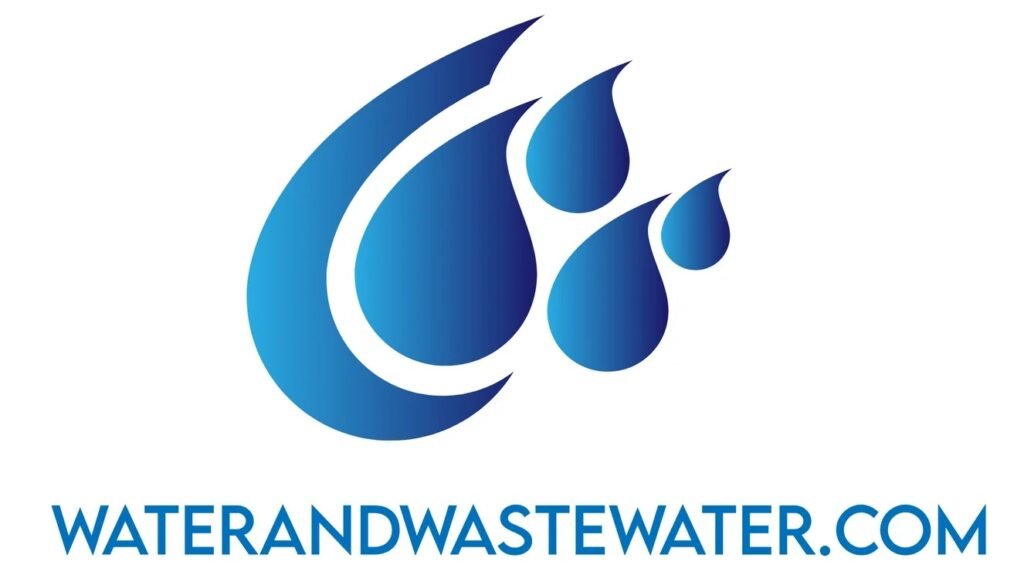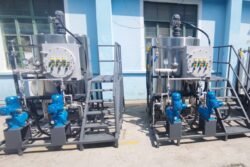Hydrogen Peroxide Dosing System
Hydrogen Peroxide Dosing System: An In-Depth Overview
Introduction
Hydrogen peroxide (H₂O₂) is a clear, colorless liquid that has gained traction as a powerful oxidizer and disinfectant across various industries. Its versatility and effectiveness make it a popular choice for applications ranging from water treatment to food processing. This article provides a comprehensive overview of hydrogen peroxide dosing systems, covering their principles of operation, applications, benefits, and best practices for implementation.
What is Hydrogen Peroxide?
Hydrogen peroxide is a simple peroxide compound with strong oxidizing properties. It has a wide range of applications due to its effective antimicrobial and bleaching capabilities. Its chemical structure consists of two hydrogen atoms and two oxygen atoms, making it a relatively simple molecule. When used in dosing systems, hydrogen peroxide can provide several benefits, including disinfection, odor removal, and oxidation of contaminants.
Principles of Operation
How Hydrogen Peroxide Works
Hydrogen peroxide acts as an oxygen donor in various reactions. When it comes into contact with organic and inorganic material, it breaks down into water and oxygen gas. This process releases energy in the form of free radicals, which can attack and break down microbial cells, viruses, and other contaminants.
- Oxidation: H₂O₂ oxidizes organic materials, resulting in the degradation of pollutants and pathogens.
- Disinfection: At higher concentrations, hydrogen peroxide effectively inactivates microorganisms, making it a potent disinfectant.
- Decomposition: In various applications, H₂O₂ decomposes into harmless by-products, mainly oxygen and water, preventing environmental contamination.
Dosing System Components
A hydrogen peroxide dosing system typically comprises several key components to ensure accurate and effective application:
-
Storage Tanks: These are designed to hold hydrogen peroxide safely. Material compatibility and temperature control are essential to prevent the degradation of the peroxide.
-
Pumping System: Specialized pumps are used for transferring hydrogen peroxide from the storage tank to the dosing point. Due to its corrosive nature, materials such as PTFE or stainless steel are often used.
-
Mixing Unit: Depending on the application, a mixing unit may be required to dilute the hydrogen peroxide to the desired concentration before dosing.
-
Control Panel: This electronic component monitors and adjusts the flow rates, ensuring that the correct dosage is administered at the right time.
-
Injection Point: The point at which hydrogen peroxide is introduced into the process or system.
- Sensors and Flow Meters: These devices ensure accurate measurement and control of the dosing process, providing feedback to the control panel.
Applications of Hydrogen Peroxide Dosing Systems
Hydrogen peroxide dosing systems find applications in various industries owing to their effective disinfectant and oxidizing properties. Below are some key areas where these systems are utilized:
1. Water Treatment
Hydrogen peroxide is widely used in municipal and industrial water treatment facilities. Its applications include:
-
Disinfection: H₂O₂ can effectively inactivate bacteria, viruses, and protozoan cysts in drinking and wastewater.
-
Oxidation of Contaminants: It can oxidize various inorganic contaminants, including iron and manganese, facilitating their removal during water treatment.
- Removal of Odor and Taste: Hydrogen peroxide helps to eliminate unpleasant odors and tastes from water by oxidizing organic compounds.
2. Food Processing
The food industry employs hydrogen peroxide for its antimicrobial properties. Applications include:
-
Sanitation: H₂O₂ is used to disinfect surfaces, equipment, and materials, reducing the risk of contamination.
-
Antimicrobial Treatment: It can be used in washing fruits and vegetables or as a treatment for food packaging to extend shelf life without harmful residues.
- Bleaching Agent: Hydrogen peroxide acts as a bleaching agent in some food processing operations.
3. Agriculture
In agriculture, hydrogen peroxide is utilized as a disinfectant and oxidative agent:
-
Soil Treatment: It can help control pests and pathogens in the soil, promoting healthier crop growth.
- Seed Treatment: H₂O₂ has been used to disinfect seeds before planting, improving germination rates and reducing crop disease.
4. Oil and Gas Industry
Hydrogen peroxide dosing systems are also utilized in the oil and gas sector, particularly for:
-
Enhanced Oil Recovery: H₂O₂ can be used as part of advanced recovery techniques to improve oil yield and manage reservoir conditions.
- Oxidation of Hydrocarbons: It can oxidize hydrocarbons in wastewater streams, aiding in pollution control.
5. Healthcare and Pharmaceutical
In healthcare, hydrogen peroxide’s antimicrobial properties make it valuable, particularly for:
-
Surface Disinfection: Equipment and surfaces in surgical and diagnostic settings can be effectively disinfected using H₂O₂.
- Wound Cleaning: Low concentrations of hydrogen peroxide are often recommended for cleaning wounds and skin infections.
6. Textile Industry
The textile industry employs hydrogen peroxide for:
-
Bleaching: It is widely used as an eco-friendly alternative to chlorine-based bleaching agents in fabric treatment.
- Disinfection: H₂O₂ can effectively eliminate microbial contaminants in fabrics.
Benefits of Hydrogen Peroxide Dosing Systems
1. Effective Disinfection
Hydrogen peroxide delivers an efficient and broad-spectrum antimicrobial solution that can kill bacteria, viruses, and other pathogens, thus ensuring a high level of hygiene in various applications.
2. Eco-Friendly
When it decomposes, hydrogen peroxide breaks down into water and oxygen, leaving no harmful residues behind. This makes it an environmentally friendly choice compared to traditional chemical disinfectants.
3. Diverse Applications
The versatility of hydrogen peroxide allows dosage systems to be employed across various industries, eliminating the need for multiple chemical products.
4. Cost-Effectiveness
In many applications, hydrogen peroxide can be a more cost-effective solution than other, more complex chemical treatments. Its ability to oxidize a range of contaminants can also reduce the need for subsequent treatment processes.
5. Easy Monitoring and Control
Modern hydrogen peroxide dosing systems come equipped with advanced monitoring and control capabilities, ensuring accurate dosing, reducing waste, and enhancing efficiency.
Challenges and Considerations
Despite its many advantages, implementing a hydrogen peroxide dosing system comes with some considerations:
1. Concentration Management
Hydrogen peroxide’s effectiveness can vary with concentration. It’s crucial to monitor levels accurately to ensure optimal performance while minimizing risks.
2. Material Compatibility
Hydrogen peroxide can be corrosive, necessitating careful selection of materials used in pumps, storage tanks, and piping to prevent degradation and leaks.
3. Safe Handling
While hydrogen peroxide is effective, it can pose safety risks at higher concentrations. Proper handling protocols and training for staff are essential to prevent accidents.
4. Regulatory Compliance
Depending on the application and industry, specific regulations may govern the use of hydrogen peroxide. Businesses must ensure compliance with any relevant laws and standards.
Best Practices for Hydrogen Peroxide Dosing Systems
To maximize the effectiveness of hydrogen peroxide dosing systems, consider the following best practices:
1. Regular Monitoring and Maintenance
Routine checks of the dosing system, including calibration of flow meters and sensors, will help ensure optimal functioning and safety.
2. Training Staff
Educate employees on hydrogen peroxide’s properties, handling procedures, and emergency response protocols to promote a safe workplace.
3. Optimize Dosage
Efficient dosing requires thorough understanding of the application requirements, including concentrations needed for specific disinfection or oxidation tasks.
4. Implement Control Systems
Advanced control systems can help optimize hydrogen peroxide dosing processes by automating adjustments based on real-time feedback, reducing human error, and improving accuracy.
5. Waste Management
Consider how hydrogen peroxide can be integrated into a broader waste management strategy. Ensure that water effluents or residual H₂O₂ from processes are treated adequately before discharge.
Conclusion
The hydrogen peroxide dosing system is a powerful tool that offers multiple advantages in disinfection, oxidation, and pollution control across various industries. Its effectiveness, coupled with environmental benefits, positions it as an essential solution in modern applications.
While challenges such as concentration management and material compatibility do exist, following best practices in monitoring, maintenance, and staff training can significantly enhance the system’s performance. As industries continue to prioritize safety and sustainability, hydrogen peroxide dosing systems are likely to play an increasingly integral role.
In a rapidly evolving landscape where health, safety, and environmental considerations are paramount, understanding and implementing effective hydrogen peroxide dosing systems will prove crucial for organizations aiming to remain competitive and responsible.

